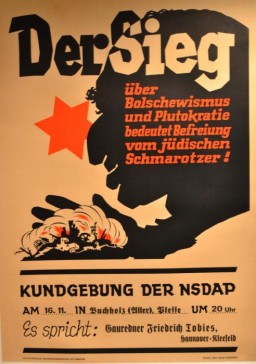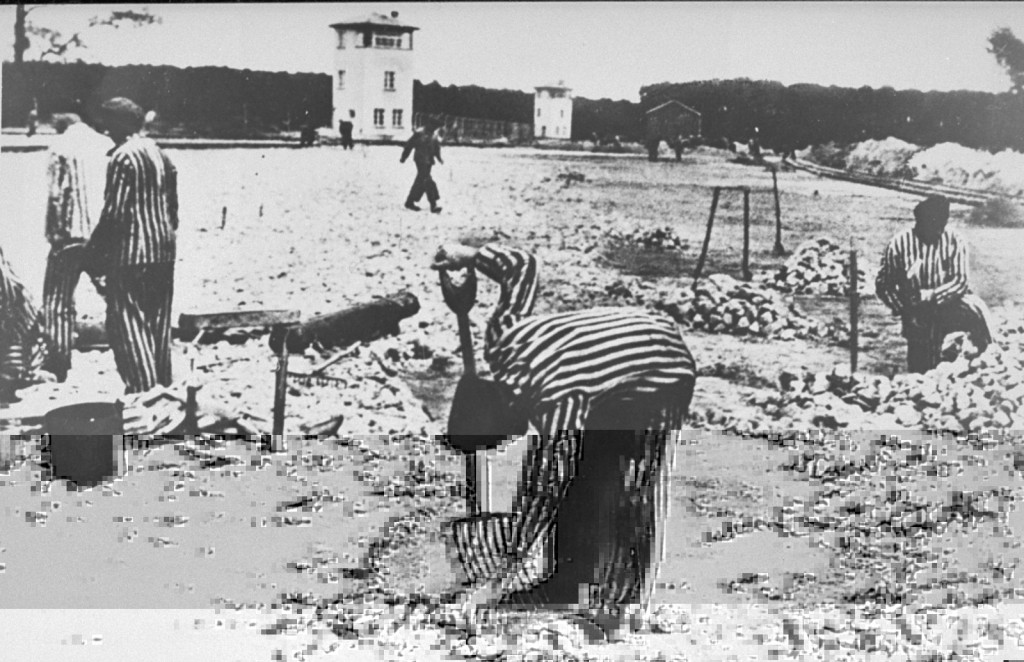<< Previous | Displaying results 1-50 of 981 for "" | Next >>
-
Nazi Racism
ArticleNazi racism and racial antisemitism ultimately led to mass murder and genocide. Learn more about Nazi racial ideology.
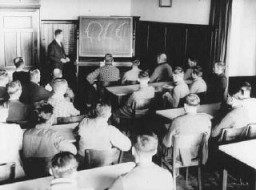
-
African Americans in Nazi Germany
ArticleLearn about African Americans' experiences in Nazi Germany before and during World War II.
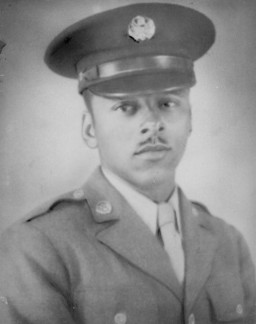
-
Josef Mengele
ArticleProminent SS physician Josef Mengele, called the "angel of death" by his victims, conducted inhumane medical experiments on prisoners in the Auschwitz camp.
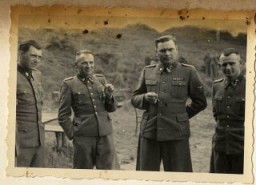
-
Dachau
ArticleDachau was the first and longest operating Nazi concentration camp. Learn about the camp's early years, prisoners, medical experiments, and liberation.
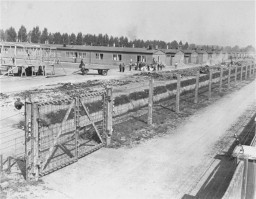
-
Pearl Harbor
ArticleJapan’s aerial attack on Pearl Harbor changed many Americans' attitudes toward involvement in WWII. Learn more about the events, facts, and background info.
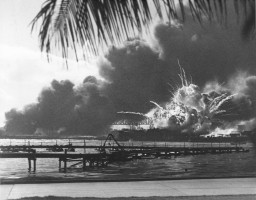
-
Martin Weiss
ArticleMartin Weiss and his family were deported to Auschwitz in 1944. Explore Marty’s biography and his description of arrival in Auschwitz.
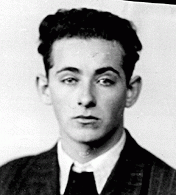
-
Deportations to and from the Warsaw Ghetto
ArticleAt its height, the Warsaw ghetto held over 400,000 people living in horrendous and worsening conditions. Learn about deportations both to and from the ghetto.
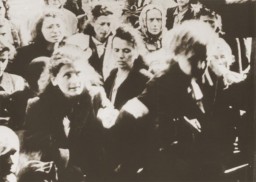
-
Killing Centers: An Overview
ArticleThe Nazis established killing centers in German-occupied Europe during WWII. They built these killing centers for the mass murder of human beings.
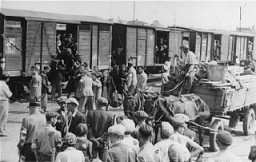
-
The British Policy of Appeasement toward Hitler and Nazi Germany
ArticleIn the 1930s, Prime Minister Neville Chamberlain and the British government pursued a policy of appeasement towards Nazi Germany to avoid war. Learn more.
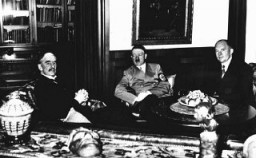
-
German-Soviet Pact
ArticleThe German-Soviet Pact paved the way for the joint invasion and occupation of Poland by Nazi Germany and the Soviet Union in September 1939.
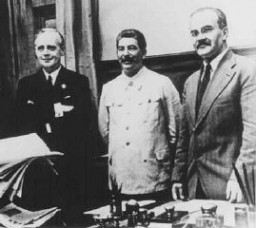
-
Brandenburg T4 Facility
ArticleBrandenburg was one of six killing centers the Nazis established to murder patients with disabilities under the so-called "euthanasia" program.
-
Refugees Today
ArticleAs of mid-2022, there were about 27 million refugees. Learn more about these refugees, the violence they face, and the global impact of the refugee crisis.

-
Bernburg T4 Facility
ArticleBernburg was the fifth of six centralized killing centers established by German authorities within the context of the Nazi “euthanasia,” or T4, program.
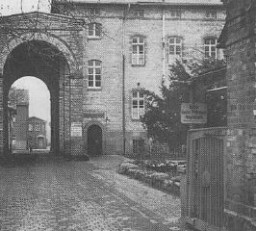
-
Martin Niemöller: "First they came for..."
ArticleLearn about the origins and legacy of Pastor Martin Niemöller's famous postwar words, “First they came for the socialists, and I did not speak out…”
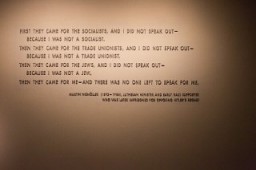
-
Genocide of European Roma (Gypsies), 1939–1945
ArticleLearn about the history of discrimination against Roma in Europe and how the Nazi regime committed genocide against European Roma during WWII.
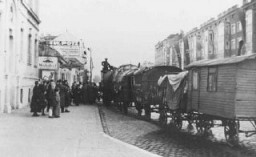
-
Henry Morgenthau Jr.
ArticleHenry Morgenthau Jr had a key role in creating and operating the War Refugee Board, a government agency tasked with rescuing and providing relief for Jews during the Holocaust.
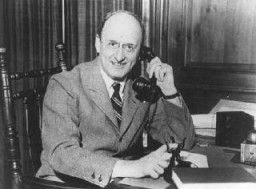
-
Frances Perkins
ArticleFrances Perkins was FDR's secretary of labor. Learn about her role in the rescue of European Jews whose lives were threatened by the Nazi regime.
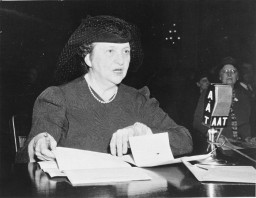
-
The Immigration of Refugee Children to the United States
ArticleMore than one thousand unaccompanied refugee children fleeing Nazi persecution arrived in the United States between 1933 and 1945. Learn more
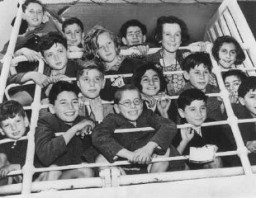
-
The United States and the Refugee Crisis, 1938–41
ArticleNazi Germany’s territorial expansion and the radicalization of Nazi anti-Jewish policies triggered a mass exodus. Learn about the US and the refugee crisis of 1938–41.
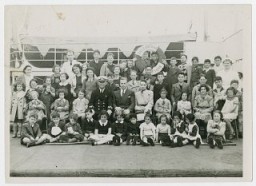
-
The United States and the Holocaust
ArticleHow did the United States respond to the Holocaust and World War II? Start learning today.
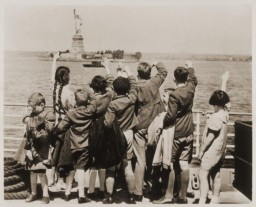
-
The United States and the Nazi Threat: 1933–37
ArticleLearn about responses in the United States to reports about Nazi anti-Jewish policies and violence against Jews from 1933–37.
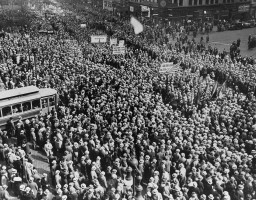
-
Deportations to Killing Centers
ArticleWith help from allies and collaborators, German authorities deported Jews from across Europe to killing centers. The vast majority were gassed almost immediately after their arrival in the killing centers.
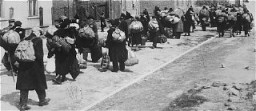
-
Estelle Laughlin
ArticleExplore Estelle Laughlin’s biography and learn about her experiences during the Warsaw ghetto uprising.
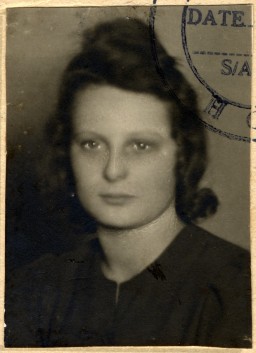
-
Erika Eckstut
ArticleExplore Erika Eckstut's biography and learn about the difficulties and dangers she faced in the Czernowitz ghetto.
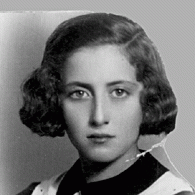
-
Manya Friedman
ArticleExplore Manya Friedmann’s biography and listen to her describe her experiences following the liberation of Auschwitz.
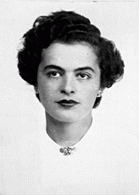
-
The Nuremberg Race Laws
ArticleThe Nazi regime’s Nuremberg Race Laws of September 1935 made Jews legally different from their non-Jewish neighbors. The laws were the foundation for future antisemitic measures .
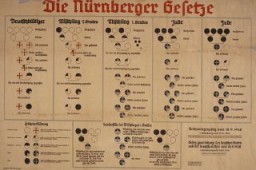
-
The Sicherheitsdienst (SD)
ArticleThe Sicherheitsdienst (Security Service, SD) was a Nazi intelligence agency. Ideologically radical and part of the SS, it was a key perpetrator of the Holocaust.
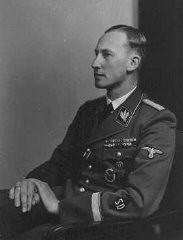
-
Jan Karski
ArticleAn underground courier for the Polish government-in-exile, Jan Karski was one of the first to deliver eyewitness accounts of the Holocaust to Allied leaders.
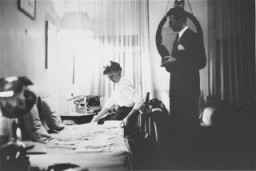
-
The Nazi Olympics Berlin 1936
ArticleThe 1936 Olympics in Berlin under Adolf Hitler's Nazi dictatorship were more than just a worldwide sporting event, they were also a show of Nazi propaganda.
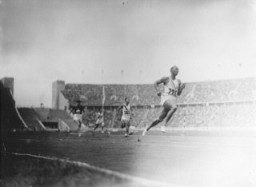
-
Lodz
ArticleNazi authorities established the Lodz ghetto in 1940. Learn about living conditions and forced labor in the ghetto, as well as deportations to and from there.
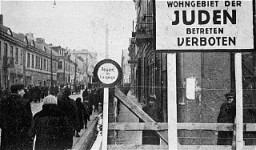
-
Drancy
ArticleThe Germans established an internment camp at Drancy in August 1941. The following summer, Drancy became the main transit camp for deportations of Jews from France.
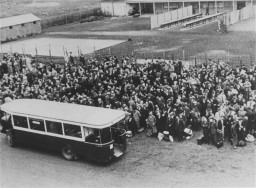
-
Atrocities against Burma's Rohingya Population
ArticleThe Burmese military has targeted the Rohingya people because of their ethnic and religious identity. The military’s actions constitute genocide and crimes against humanity. Learn more
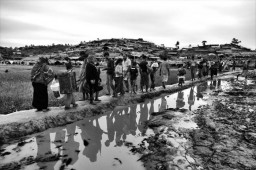
-
Mass Shootings of Jews during the Holocaust
ArticleAlmost one third of the six million Holocaust victims were murdered in mass shootings.
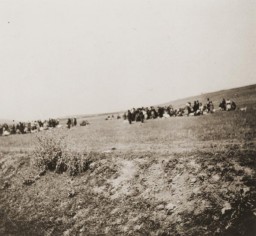
-
The "We Will Never Die" Pageant
Article"We Will Never Die" was a 1943 musical stage performance that raised awareness among Americans about the murder of European Jews. Learn more.
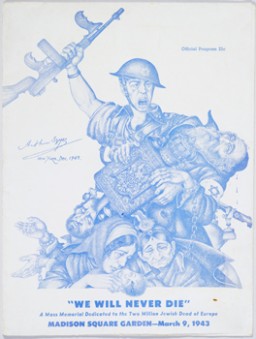
-
The Security Police (SiPo)
ArticleThe Security Police (Sicherheitspolizei, SiPo) was a German police organization created by Heinrich Himmler. Learn about its origin and role in the Holocaust.
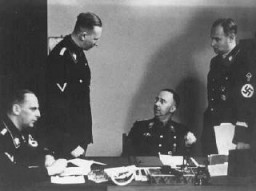
-
Jozef Tiso
ArticleJozef Tiso was a Slovak politician and a Roman Catholic priest. From 1939 to 1945, he was the president of the Slovak Republic, one of Nazi Germany’s allies.
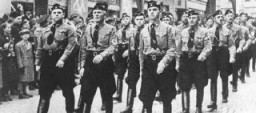
-
Léon Degrelle
ArticleLéon Degrelle was an extreme right-wing Belgian politician and Nazi collaborator. After the war, he continued to spread pro-Nazi propaganda for decades. Learn more.
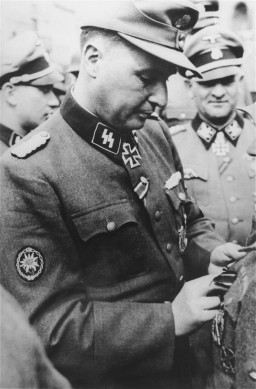
-
Leon Rupnik
ArticleDuring World War II, Slovene general Leon Rupnik collaborated with the forces of Fascist Italy and Nazi Germany. Rupnik was appointed president of the Provincial Government of the German-occupied Province of Ljubljana in 1943. He was convicted of treason and executed in 1946. In 2020, his sentence was annulled on a technicality.
-
Robert Ritter
ArticleRobert Ritter was a German doctor whose work helped drive the development of the Nazi regime’s anti-Romani policies of persecution and genocide.
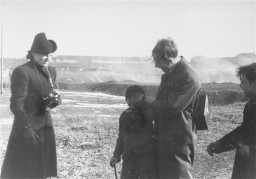
-
Magnus Hirschfeld
ArticleA leading researcher of sex, sexuality, and gender, German Jewish doctor Magnus Hirschfeld was forced to live in exile after the Nazi rise to power.
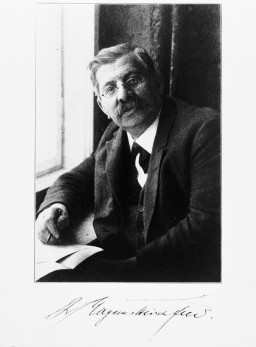
-
Dawid Sierakowiak
ArticleYoung people's diaries capture some of the most heartbreaking experiences of the Holocaust. Learn about the diary and experiences of David Sierakowiak.
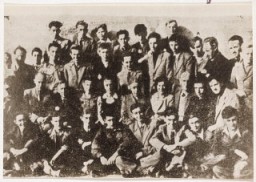
-
War Refugee Board: Background and Establishment
ArticleIn January 1944, FDR established the War Refugee Board which was charged with “immediate rescue and relief of the Jews of Europe and other victims of enemy persecution.”
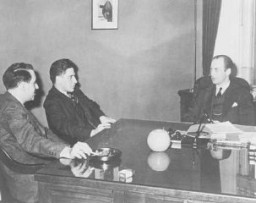
-
Law on the Head of State of the German Reich
ArticleThe Law on the Head of State of the German Reich was the last step in destroying democracy in interwar Germany and making Adolf Hitler a dictator. Learn more.
-
Mass Shootings at Babyn Yar (Babi Yar)
ArticleAt Babyn Yar in late September 1941, SS and German police units and their auxiliaries perpetrated one of the largest massacres of World War II.
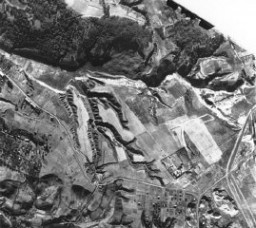
-
Ritchie Boys
Article“Ritchie Boys” is a term used for American soldiers who trained at Camp Ritchie during World War II. Several thousand were Jewish refugees from Europe. Learn more.
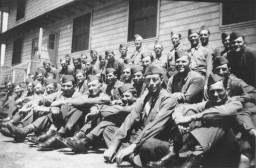
-
"We will show you their own films": Film at the Nuremberg Trial
ArticleNazi Germany’s dedicated filming of itself became evidence of its crimes and was displayed at the International Military Tribunal at Nuremberg. Learn more.
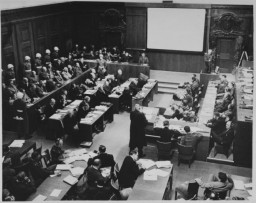
-
Reversal of Fortune: Robert Kempner
ArticleLawyer Robert Kempner was expelled from Germany in 1935. After WWII, he would return to serve as assistant US chief counsel during the IMT at Nuremberg.
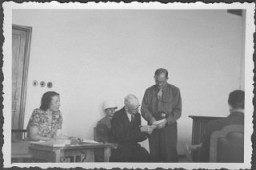
-
James Ingo Freed: Architect of the Museum
ArticleArchitect James Ingo Freed designed the United States Holocaust Memorial Museum.

-
Antisemitism in History: World War I
ArticleLearn about trends that developed during and immediately after WWI that brought antisemitism, including its racist variant, into the mainstream of European politics.
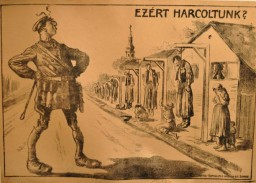
-
Antisemitism in History: Nazi Antisemitism
ArticleAntisemitism (hatred of Jews) predominated in Nazi ideology. The Nazis built upon centuries of anti-Jewish sentiment. Learn about antisemitism in Nazi ideology.
